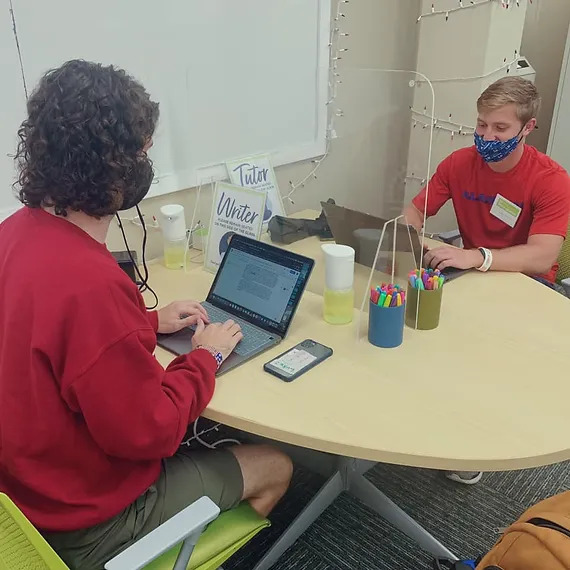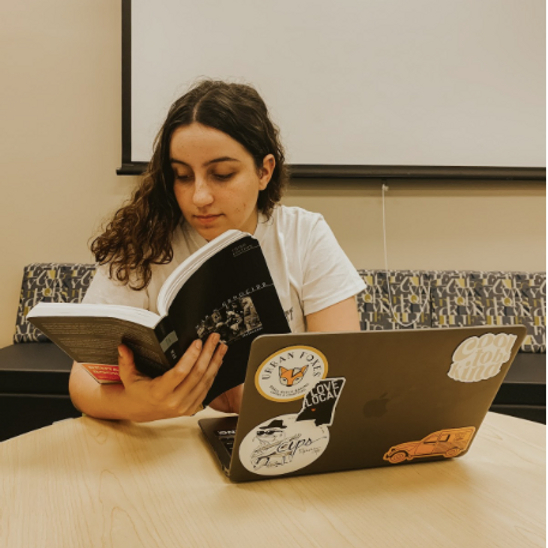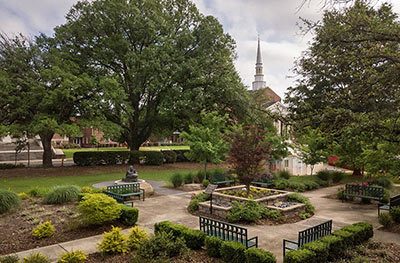What Happened in April:
The Reading Life of a Writing Center Tutor
As we’re drawing closer to the end of the semester, many of us are beginning to consider what we’re going to do this summer. When faced with the pressure of final exams and assignments, you may  find it encouraging to daydream about reading a book on a sandy beach during a bright, sunny day. You might look forward to the nights you can stay up reading a book you enjoy, instead of burning the midnight oil to finish required reading for your courses. The days of reading for enjoyment, rather than school, are often just a daydream for college students like us due to the demands of our courses and academic life. Maria, one of our tutors at the Writing Center, talks about her reading life and offer advice for finding time to read for fun during college.
find it encouraging to daydream about reading a book on a sandy beach during a bright, sunny day. You might look forward to the nights you can stay up reading a book you enjoy, instead of burning the midnight oil to finish required reading for your courses. The days of reading for enjoyment, rather than school, are often just a daydream for college students like us due to the demands of our courses and academic life. Maria, one of our tutors at the Writing Center, talks about her reading life and offer advice for finding time to read for fun during college.
Do you miss those carefree days of childhood? When all you had was 30 minutes of homework after school, and the rest of the evening was yours. You spent your evenings exploring, making up new stories, daydreaming about heroic stories of knights in shining armor saving the princess from her tower, fueling your imagination with reading.
Wow. Reading. Sometimes I can’t believe that there was actually a time in my life when I could afford to spend my free time reading books for fun.
Let’s be honest: finding time to read in college is hard. Between going to classes, doing assignments, having a job, and making time for a social life, it’s pretty difficult to squeeze in a few minutes to pick up a book. I barely even have time to sleep, much less read. College is the time of our lives when we probably need to sit down and read a book, yet our schedules are constantly ripping us away from that luxury. In a course I took in the spring of 2021 (ENG 271: Introduction to Research Methods), my class researched the reading habits of college students and how those habits have changed over time. Not to our surprise, most college students have little time to read during their day. Even the ones who were always in the 500 Advanced Reading points club in middle school struggled to read for fun in college.
If you’re like me, then you miss being able to sit down and read a good book. As a professional student for the last 15 years and an avid reader, I’m going to be sharing my top 3 tips for getting back into reading. But first, let’s lay out some definitions:
-
Academic reading: reading for the purpose of a class. Whether it be a textbook, an essay, an online article, or a copy of the Declaration of Independence, we spend most of our time as college students doing academic reading.
One of the few circumstances that academic reading is also pleasure reading for me. I’m reading my
textbook for “Psychology of the Holocaust, War and Genocide: A Concise History of
the Holocaust” by Doris L. Bergen. Such an interesting and informative read!
-
Pleasure reading: reading for the purpose of pleasure and self-enjoyment. Pleasure reading looks different for every individual. For you, it might be picking up something dark and mysterious like Agatha Christie or shaping up on your Edgar Allan Poe-try—pun intended. For another, pleasure reading might be reading the latest #Booktok trend, like Madeline Miller’s Song of Achilles or The Invisible Life of Addie LaRue by V.E. Schwab. For me, pleasure reading is grabbing an apologetics or psychology book, such as the one I’m currently reading, The Question of God: C.S. Lewis and Sigmund Freud Debate God by Armand Nicholi.
It’s important to lay out the differences between academic reading and pleasure reading because it helps us compartmentalize our time. The time you set aside for pleasure reading should not be spent reading for a class (unless you’re one of the lucky few who finds academic reading satisfying. I’ll admit, there have been a few times I’ve had to stop myself from getting ahead in my textbook for Psychology of the Holocaust because I found the material so interesting). If we don’t distinguish pleasure reading from academic reading, then reading, whether for fun or not, becomes an assignment or a task, not something done out of sheer will.

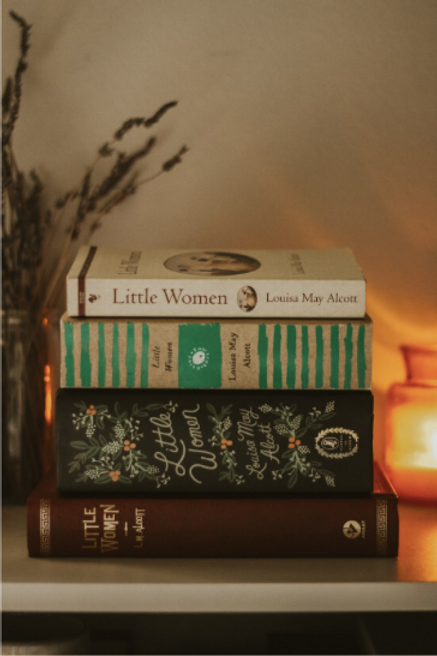
All four of my copies of “Little Women.” One of my hobbies is collecting multiple
editions of the same book, “Little Women” being one of those books!
Now, let’s get to the tips.
1. Reread a book you enjoyed the first time you read it.
Maybe it’s a book you read in your high school English class or one you read for summer reading back in middle school. Find a book that you liked the first time you read it and reread it! If it was a book for an assignment, take this opportunity to read it for pleasure, without the pressure of annotating or writing an essay at the end of it. These are some of the books I like to go back to when I’m in a reading funk: The Great Gatsby by F. Scott Fitzgerald, Macbeth by Shakespeare, The Last Lecture by Randy Pausch, and Mere Christianity by C.S. Lewis.

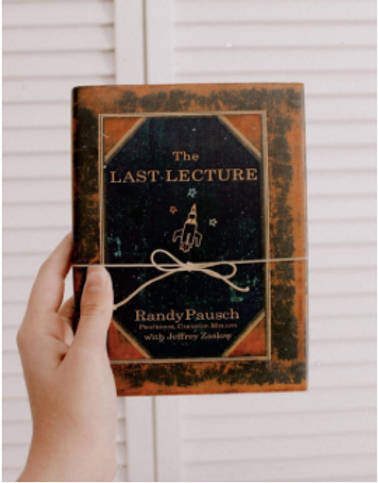
One of my favorite books of all time, The Last Lecture by Randy Pausch.
2. Make a game out of reading.
If reading aimlessly is not your vibe, why not make a game out of it? Challenge yourself to read a book that’s been sitting untouched on your bookshelf for months. Make a Goodreads account and set up a yearly reading challenge. Goodreads lets you choose a book goal for the year, and you can follow your friends to see their reading goals, too. Let reading speak to your ambitious, competitive side. You’ll be surprised how driven you are to read when you add an incentive to it!
3. Don’t be afraid to explore a new genre.
One of the reasons I grew out of pleasure reading was because I had never found a genre I enjoyed. In high school, we only read classic fiction or young adult novels. My view of literature was so narrow because I had only been taught those genres and nothing else. For my high school graduation, I was given a copy of The Last Lecture, which is a memoir. I finished it in 2 days. I was that hooked. I had never read anything like it before. An author telling their story as it is, no formalities or academic language. Just them writing as them. From then on, I went on a spiral of reading memoirs, biographies, any kind of work similar to that informal and intimate style of writing. From that spell, I found more genres I enjoyed: psychology-nonfiction and apologetics. Finding the genres that appeal to my own interests made me eager to read more. I was driven to find time to read, no matter how busy I was. Long story short: don’t let old reading environments narrow your vision, and don’t be afraid to explore new genres. You never know what is out there.

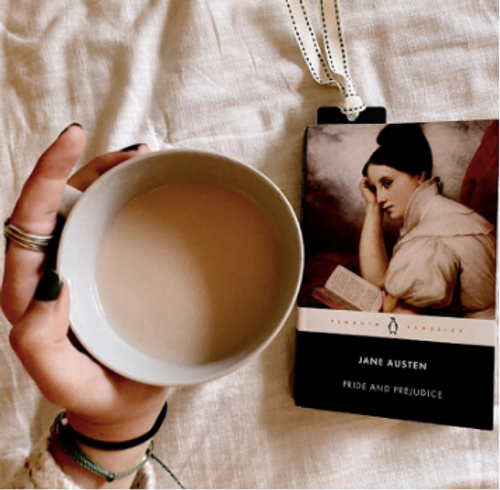
Me with a chai latte and one of my many copies of Pride and Prejudice. Despite having seen
the 2005 adaptation a billion times, I did not particularly enjoy reading this book!
Wherever you are in your reading journey, I hope you use these tips from Maria to get back to those childhood days of endless reading. You can follow Maria in her reading journey on Goodreads and Instagram. You can also always stop by the Writing Center to talk to Maria or any of our tutors about their reading life and book recommendations. We love to talk about all aspects of writing, especially reading. Reading helps us learn about writing strategies and enables our growth as writers!
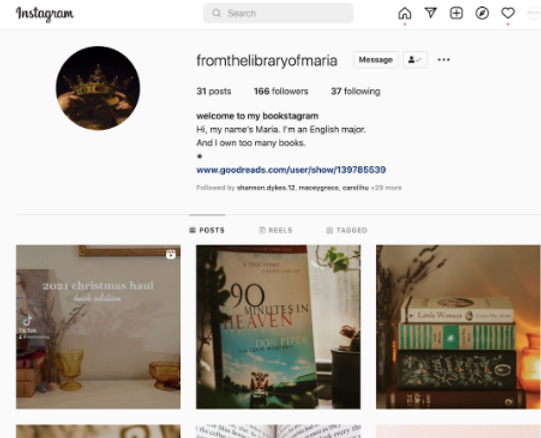
Follow Maria’s reading journey on Instagram @fromthelibraryofmaria
What also Happened in April:
The Writing Center Community
We’re beginning finals this week, which means that our semester has nearly come to a close. I always take some time to reflect back on each academic year around finals week. As I reflect back on the 2021-2022 academic year, I realize that our Writing Center community has truly grown and flourished over the course of this year. We’ve grown closer and adapted our community to connect with each other in different ways. I reached out to Amy Atwood, one of our tutors here at the Writing Center, to tell you more about our Writing Center community.

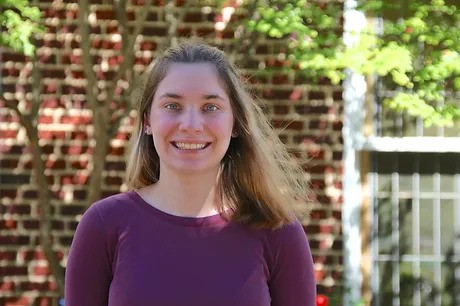
Amy Atwood, Writing Center tutor
Have you ever had something fall short of your expectations? When I became a tutor at the Writing Center, I was expecting to become a part of an in-person community of people who I worked alongside every day in the Writing Center. However, in the beginning, it didn’t play out that way. The semester that I took English 398 to learn how to tutor was the first Covid semester where everyone was sent home. The next year, my first year as a tutor, my hours were half online and half in person. It’s really hard to make friends with people when everyone’s wearing masks, staying 6 feet apart, separated by plastic, and afraid of the people around them.
As I spent more time working in the Writing Center, I found that my expectations for community and friendship in the Writing Center were surpassed. All of my coworkers became people I could rely on and trust. I look forward to every tutoring shift that I have, not only because I love the job itself, but because I love the people that I am surrounded by. Matt Drew was the first friend that I made in the Writing Center and he continues to strike up a conversation with me during every shift that we have together. Some other memories I have befriending fellow tutors include: bonding with Jenna Trotter over a book we both read, writing poems with Ethan Hulshizer, and complaining about all of life's troubles with Sophie Tusant.

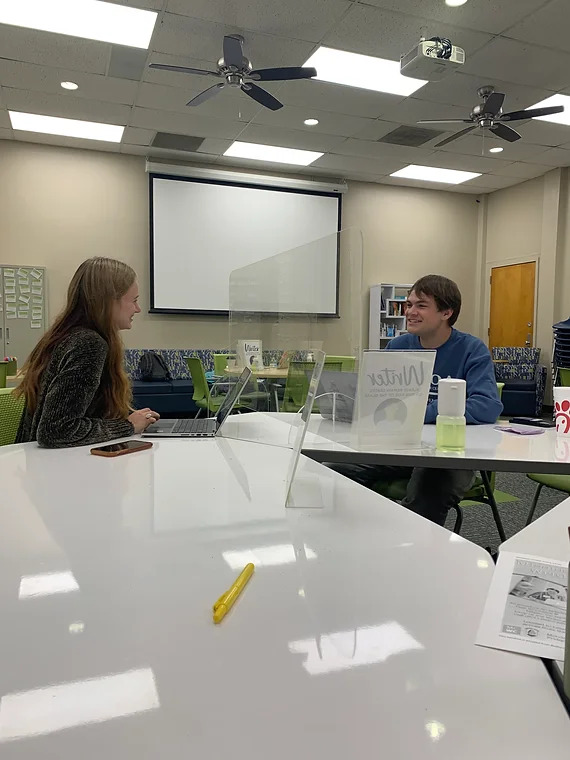
The Writing Center is full of friendships!
Not only are we friends in the Writing Center, but we’re also coworkers. This means that when any tutor needs help, the other tutors are there for them. For example, when someone can’t make it to their shift multiple people are willing to cover it. If someone is confused on how things at the Writing Center work, any tutor who’s been there and has figured it out is able to give them advice. When Callie first joined the Writing Center, a Correspondence (appointment by email) was a new thing that we had started doing to accommodate during Covid. I, having already been working there for a year, was able to help her figure out how to format and conduct those online appointments that she had never done before.
Students aren’t the only ones that make appointments at the Writing Center, fellow tutors make appointments with each other. Matt trusted me to proofread a paper that he wrote for a historical conference. Elijah Cardenas sent sections of his capstone to multiple tutors, myself included. Callie has sent assignments to both me and Ethan to get multiple eyes on it. I have also made appointments with my fellow tutors, getting multiple eyes on one assignment can be very beneficial and that’s something that we all have used each other for.

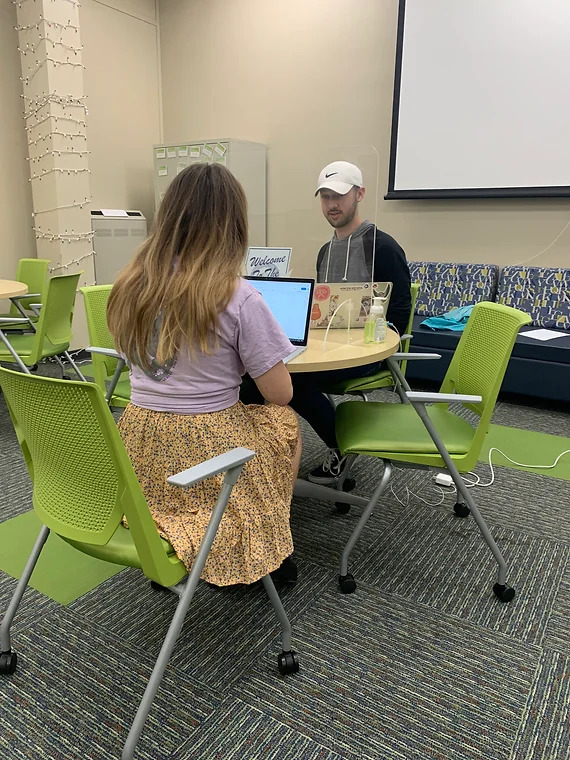
The Writing Center staff often makes appointments with each other!
At the Writing Center, two new additions have been added for tutors and students alike: the new coffee/tea/snack bar and the questions on the whiteboard. I remember just a few weeks ago when Maria offered to make me Apple Cider from the new Keurig. Reading a book and sipping on a hot drink in the Writing Center is something I highly recommend. On the whiteboard, a new question every week is surrounded by answers in many different colors. I always look forward to writing my answer and reading the responses of my fellow tutors. One of the past questions was “What font are you?” and we all collectively agreed that Ethan is Comic Sans.
With reopening the Writing Center in person came hosting events for tutors. Right after spring break, we had our first Writing Center movie night with pizza, popcorn, and good conversation. Our last Writing Center workshop was held in person with coffee and donuts. Every semester we have an end of the year party to hang out, celebrate each other, and say goodbye to graduating seniors. Throughout the month before, cards are passed around for tutors to let the seniors know we will miss them. This community is one full of love, laughter, and some of my favorite memories. The community of the Writing Center tutors if everything I hoped it would be and more. I highly encourage you to stop by the Writing Center before the end of the semester and get to know us more! Every student is a welcome member of our community and we would love for you to become more connected with us.

